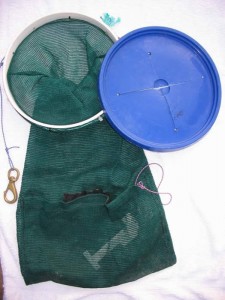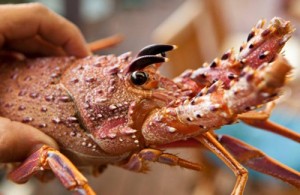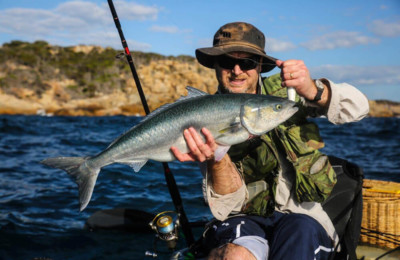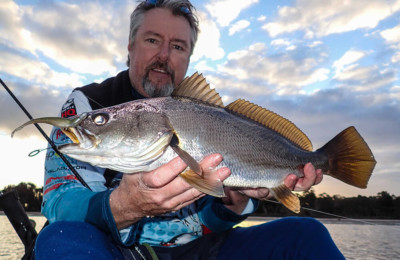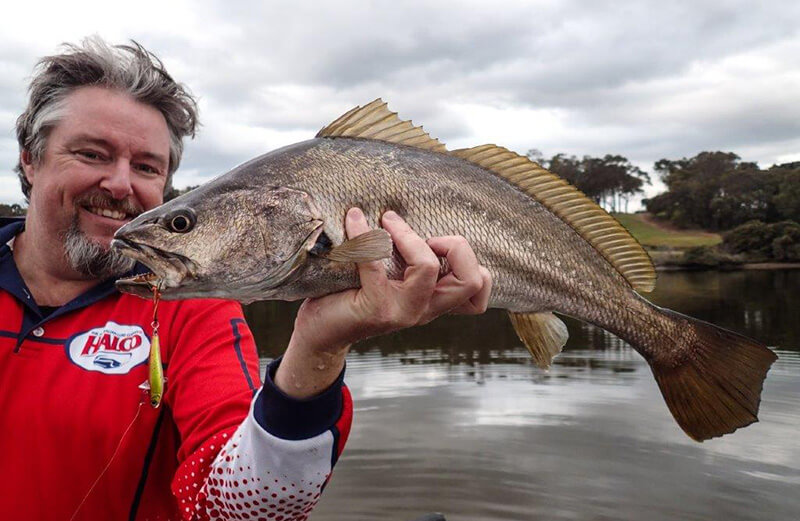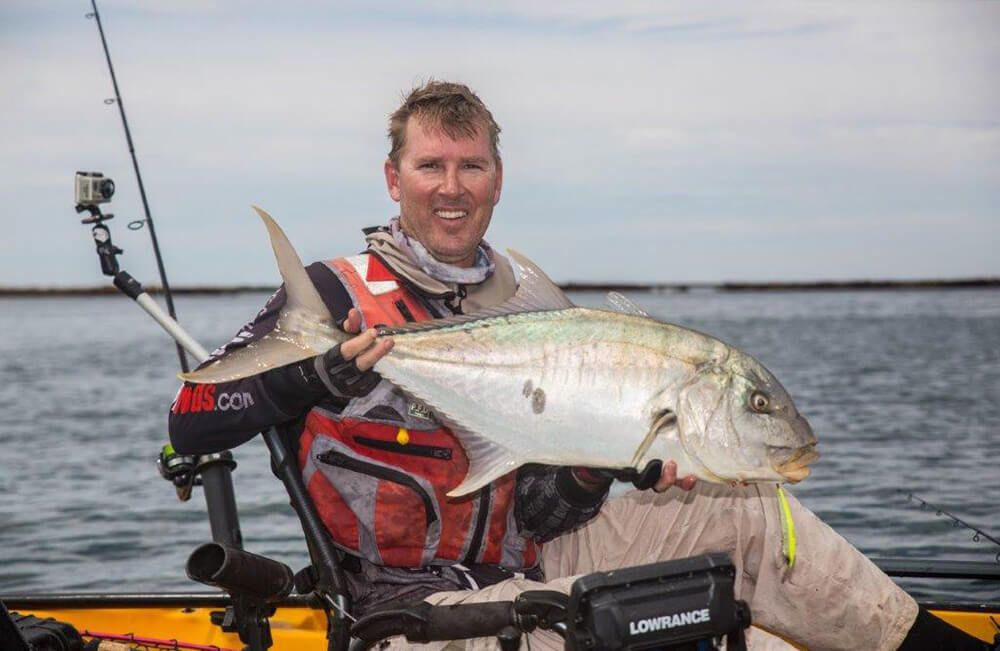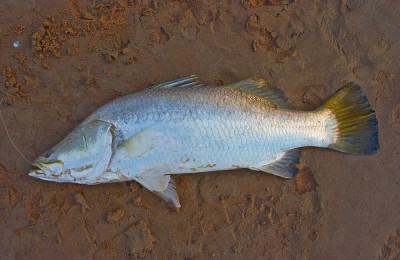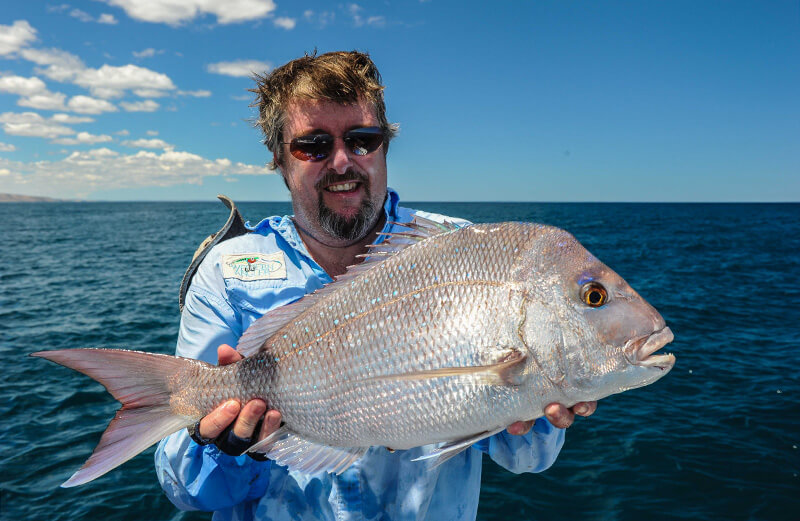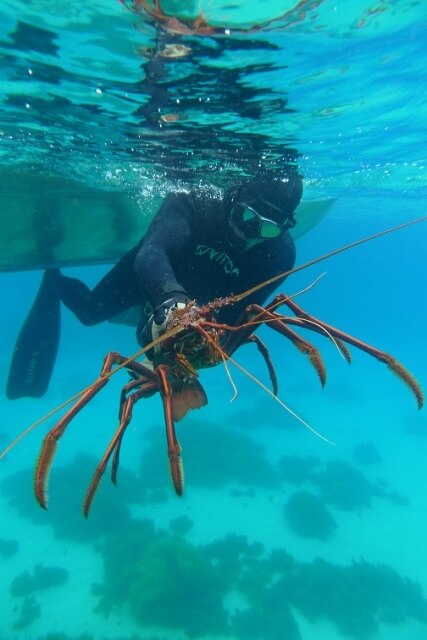 Article written by Paul Mckeown, Bluewater Freedivers of WA
Article written by Paul Mckeown, Bluewater Freedivers of WA
We are blessed here in Western Australia with our low population and vast and mostly pristine coast line. This gives the diver a huge choice of environments to fish in, from the Southern Ocean around Esperance to the far north towards Broome and offshore to the Rowley Shoals.
There are several species of Lobster (family Palinuridae or Spiny Lobster) that commonly occur in each region of our state. At the top of the list would have to be the western rock lobster, commonly referred to as crayfish or crays.
They are generally found from Augusta to Ningaloo but the really big ones are found down south, Busselton to Hamlin Bay. Having said that, Rottnest also offers some amazing fishing opportunities.
What do you need to know to dive for crays?
Equipment
Whether catching crays with a loop and a single breath of air, or strapping on a tank is your thing, it’s a heap of fun and very challenging. Many Spearfishers develop their skills and breath hold whilst chasing crays.
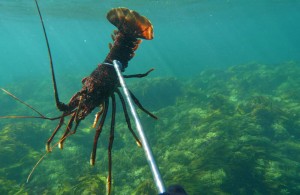 There are many things that will make catching them easier but the number one thing would have to be being comfortable in the water, and that means being warm. A good two piece, 3mm or 5mm wetsuit with a hood is ideal.
There are many things that will make catching them easier but the number one thing would have to be being comfortable in the water, and that means being warm. A good two piece, 3mm or 5mm wetsuit with a hood is ideal.
Follow this up with a black silicone low volume mask (stops light entering and reflecting off the inside of your mask), a stout pair of gloves, soft neoprene socks, closed heel fins (power transfer) and weight belt and you’re half way there.
Remember, I am talking about the ideal, you don’t have to spend a fortune and a simple mask and snorkel/fins combo will do the trick.
Having the correct weight on your weight belt is essential, you need to be positively buoyant on the surface but it needs to be easy to glide to the bottom.
If free diving, it’s all about maximizing your breath hold, reducing anxiety and increasing bottom time. Stability whilst on the bottom is crucial if there is any sort of swell about.
A self-closing catch bag, spring loaded or non-returning type work well and there are plenty to choose from. A good alternative that I make at home is not only cheap but works extremely well (see pic). The total cost is about $20 and it only takes 15 minutes to put together.
BAG – Tackle shop fish bag $10-$15
LID – 20 liter bucket.
RIM – 20 liter bucket rim fitted drilled and cable tied to bag.
BRASS CLIP – $5. Cut cross shape in lid then heat wire and melt end of each cross to stop tearing. Never had one escape.
For safety reasons, when diving from shore I always dive with the highly visible Bluewater Safety Float with dive flag attached. I clip my catch bag and loop to it. The catch bag has a side pocket for a torch and size gauge.
To stop it all floating away I attach a small coil of thin rope with a weight at one end inside the side pocket, and when good ground is found it’s a simple matter to drop the weight and anchor the float. It not only helps to mark a specific hole in bad visibility but lets the jet skis and boaties know where you are.
If using SCUBA from a boat then an oversized dive flag placed in a rod holder or secure elevated position is recommended.
A simple spring loaded loop of medium size works a treat. I have tried the long version and found them unwieldy and hard to control in a tight spot. The claw type works and is potentially faster but takes very good reflexes and heaps of practice.
Last on the list is a dive knife. By far the cheapest and best would be a Rob Allen limpet arm scabbard $20, with a stainless fancy stiletto knife $20. Attach a lanyard to the handle and its quick access on the left or right bicep, an essential item when diving around rock groins covered in fishing line.
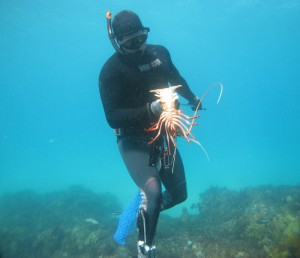 Tactics and Tips
Tactics and Tips
Knowing the habits and seasonal movements of crays is key to finding them at any given time during the season.
By far the best time to dive for crays is at the start of the season. This is when they are holed up in shallow close to the islands (Rotto, Carnac and Garden), usually in low limestone ledges just off the sand.
The metro area is very productive right on shore at this time as well. Having just shed their shells, crayfish are a light pink at this time and some can be quite soft.
Mid December sees them start to move out into deeper water. Rottnest is good right up until the end of the year then it’s not until late February, early march that they move back in close.
I have some favourite ledges and holes that start at the artificial reef at Cottesloe and just north of the main rock groin. The groin itself can produce good numbers of big crays but they are hard to get as they can disappear right up into the rocks. I have spent the last 8-9 years swimming this area and know it intimately.
North to Burns rocks also produces very well but the best areas are right in front of the Marmion Angling Club and Slimeys reef to the right of the Ocean reef marina.
I can’t comment on southern areas as I haven’t dived from shore extensively down that way. But anywhere there is low limestone reef close to shore, with kelp cover, deep crevasses, holes with low ledges off the sand and good clean water flow will produce crays. Make sure you swim slowly and check areas thoroughly.
When you find them don’t change your movements, stay calm and slow whilst deftly placing your noose behind them. Try not to brush their feelers as this will alarm them. Slip the noose under the sand, around them or over the top and open the noose in one smooth motion.
Stay focused and adapt your strategy to their movements. Sometimes the silly buggers will run towards you and over your head, other times they just sit tight and let you loop them, but not often. They will dance left or right, but just follow and be patient.
Back them into a shallow side of a crack and place one hand in their path while gently nudging them over with the loop, then grab them as they run right into your waiting fingers.
As with any pursuit worthwhile it takes practice and persistence but with a little determination you will get there.
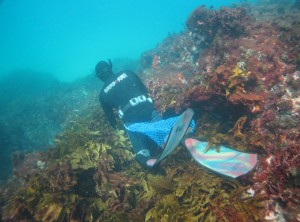 Dangers
Dangers
· Drowning is a big concern for free divers, always dive with a mate and stay together.
· Use a dive flag and don’t take unnecessary risks, diving can be dangerous and the ocean is very unforgiving.
· Know your own ability and don’t get carried away, a simple cramp or fatigue can become life threatening if a long way from shore or the boat.
· Other vessels, watch out for boats and jet skis.
· Sharks and rays, the risk from sharks is very small but is there so why not wear a Shark Shield?
Once you catch your first you’ll be hooked on a great sport that keeps you fit and feeds your friends and family. See you down there!
Get some crays on the table this season!
Why not check out our How To Catch Crayfish page for heaps more tips on catching some of these tasty crustaceans!
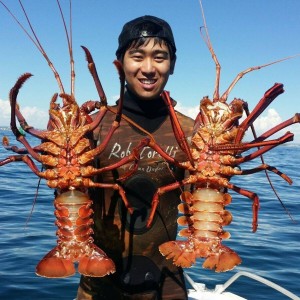

Bluewater Safety Float – the ultimate safety grab bag!
The Bluewater Safety Float keeps all your safety gear in one spot and is ready when you need it most!
Get yours now at the Fish and Survive online safety shop.

